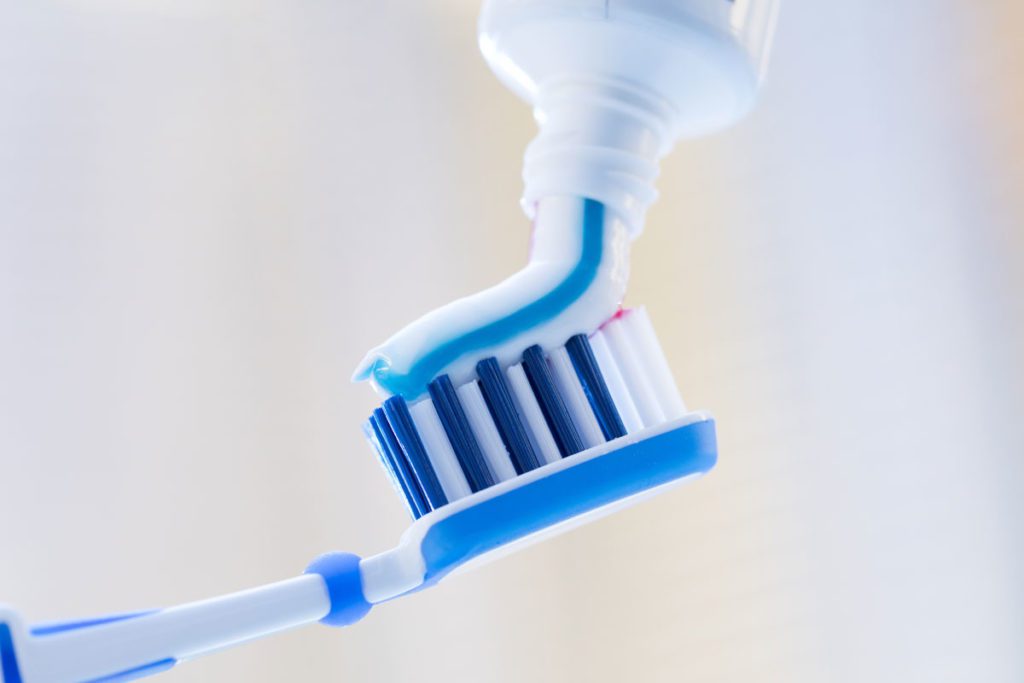
Not everyone has fluoride in their daily dental care regimen, but everyone should! Why? Fluoride helps keep cavities at bay. It can also help your teeth stay healthy and strong.
The question is: how exactly can you add fluoride into your dental care routine? In this blog, we’ll share a few easy ways to incorporate more fluoride into your regimen so that you can enjoy all of the amazing benefits that fluoride has to offer.
Let’s get started.
How to Make Fluoride a Part of Your Dental Care Routine
Fluoride is essential to healthy teeth and oral care, and the great news is that it’s simple to add to your routine. Here are a couple of ideas:
Get a high-fluoride toothpaste and mouthwash.
The quickest way to take in more fluoride is to use fluoridated dental care products, such as toothpaste and mouthwash. High-fluoride toothpaste contains 5,000 ppm of fluoride in general, and if you’re interested, you can ask your dentist for a prescription.
On the other hand, if you’re browsing for fluoridated toothpaste and mouthwash, you’ll be happy to know that the American Dental Association (ADA) has a long list of options with a sufficient amount of fluoride (often about 1,450 ppm).
The key is to consult your dentist about your tooth decay risk factors and general oral health, and see which type of toothpaste would work best for you.
Remember: when it comes to brushing, it’s important to brush your pearly whites twice each day (morning and night) with your fluoridated toothpaste. You can also use mouthwash after each brushing session (i.e., twice per day) for extra tooth protection.
Don’t filter fluoride out of your water.
Drinking fluoridated water is a top way to stop tooth decay and cavities. In fact, “Studies show that fluoride in community water systems prevents at least 25 percent of tooth decay in children and adults, even with widespread public access to fluoride from other sources such as toothpaste,” according to the ADA.
Keep in mind that not all public water systems are fluoridated. For instance, in the Tri-Cities, Pasco is currently the only city to add fluoride to their water. Richland and Kennewick do not have fluoridated water systems.
If you do have fluoride in your water system, don’t filter out the fluoride. Otherwise, you may not get the benefits of fluoride and could be at a greater risk of tooth decay than someone who drinks fluoridated water.
What can you do if the water in your city is not fluoridated? Try to get fluoride from other sources, such as fluoridated bottled water, in addition to the other tips we mention here in this blog. (Note: Not all bottled water has the amount of fluoride you need, so talk to your dentist if you’re looking for recommendations.)
Fluoridated Food
According to the National Institutes of Health, there are a variety of foods (and beverages) that naturally contain fluoride. These include but are not limited to:
- Black brewed tea
- Coffee
- Bottled water with fluoride
- Canned shrimp
- Raisins
- Oatmeal
- Grapefruit juice
- Potatoes
- Rice
- Cottage cheese
- Yogurt
- Corn
- Beef
- Pork chops
- Lamb chops
Keeping a healthy, balanced diet with plenty of fluoridated foods can help you maximize your fluoride intake, which can benefit your teeth. You don’t have to eat fluoridated food at every meal. However, enjoying a few options from the list above every day can set your teeth and dental care up for success.
Fluoride Treatment From Your Dentist
Getting a fluoride treatment is another great way to up your fluoride intake. This treatment only takes a couple of minutes to apply. Then, all we ask is that you don’t eat, drink, or rinse your mouth out for a half-hour so that your teeth can take in the fluoride, and caries within your teeth can be repaired.
How often you should schedule a fluoride treatment depends on your teeth. We generally suggest getting one once every three, six, or 12 months. Each fluoride treatment is simple, painless, and effective at keeping those pesky cavities away.
Contrary to popular belief, fluoride treatments are not only for kiddos. They’re great for adults, too. Your dentist will start by painting a fluoride varnish onto your teeth once your cleaning is over. The fluoride sinks into your teeth and works to help build up your enamel and remineralize your teeth.
This is important because when your teeth are exposed to acid from sugars and other foods, it can wear down the enamel, which can make your teeth weak and more susceptible to decay. Fluoride gives your teeth the minerals they need to help them turn around any damage and get your teeth back to optimal health.
Conclusion
There are many fluoride sources in the U.S., meaning that there is a long list of ways to fight off cavities. That includes using fluoride toothpaste, drinking fluoridated water, and getting regular fluoride treatments from your dentist.
Adding more fluoride into your dental routine is worth it to lower your chance of cavities and help your teeth stay healthy from the inside out.
Want to schedule a fluoride treatment and learn more about the many benefits of fluoride? Tri-City Dental Care is currently accepting new patients at our office here in Kennewick, Washington. Schedule your appointment online today. It’s fast and simple!
